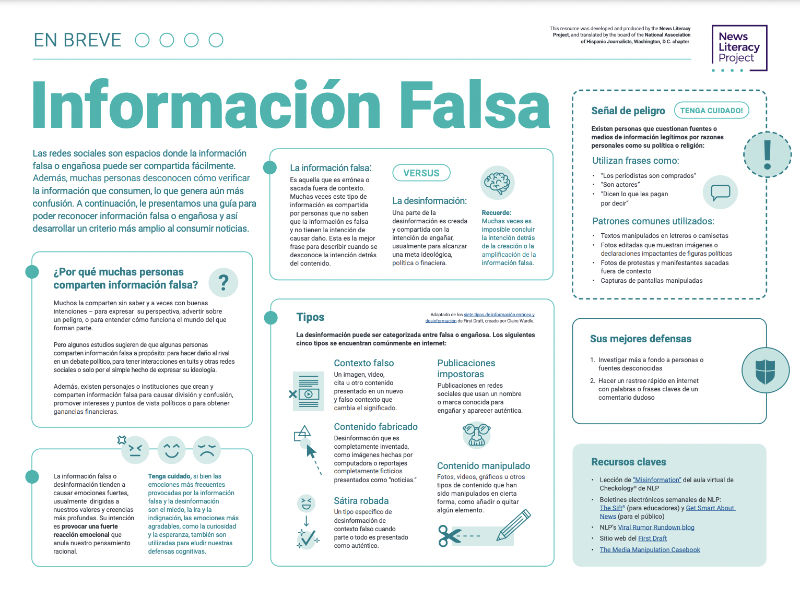Do you have an eye for credibility?
Misinformation thrives on social media where anyone can share almost anything they choose, and attention spans are short. Here’s a quick guide to help you understand what misinformation is and how to recognize it.
Misinformation
Information that is misleading, erroneous or false. Misinformation is generally shared — and sometimes created — by people who are unaware that it’s inaccurate. This is the best term to use when the intent of the creator or sharer is unknown.
Disinformation:
A subset of misinformation that is deliberately created or shared with the intention to misinform and mislead others, usually to achieve a desired ideological, political or financial result.
Remember:
The intent behind the creation or amplification of false information is often impossible to determine.
Why do people share misinformation?
Many people share misinformation unknowingly and sometimes with good or altruistic intentions — whether to articulate their perspectives, warn others away from danger or to join others in trying to make sense of the world around them.
But some research suggests that some people also knowingly share things they suspect are false — whether to damage “the other side” in a political debate, to get social media likes and shares, or to conform to their ideological identities.
Bad actors such as hyperpartisans, trolls and even foreign agents create and share disinformation to cause division and confusion, to promote political interests and points of view or for financial gain.
Mis- and disinformation are fundamentally exploitative in nature, often targeting our most deeply held values and beliefs to elicit a strong emotional reaction that overrides our more rational thought processes.
Watch out!
While the emotions most often elicited by mis- and disinformation are fear, anger and outrage, more agreeable emotions like curiosity, amusement and hope are also used to bypass our cognitive defenses.
Five Types of Misinformation
Misinformation can be categorized based on what makes it false or misleading. The following five types are commonly found online:
False context
An image, video, quote or other piece of content presented in a new, false context that changes its meaning.
Fabricated content
Misinformation that is entirely made up, such as computer-generated imagery or entirely fictional reports presented as “news.”
Stolen satire
A specific type of “false context” in which all or part of a piece of satire is presented as authentic.
Impostor content
Content — such as a fake tweet from a public figure, or a fake ad — that falsely uses a well-known name, brand or logo to fool people into believing that it is authentic.
Manipulated content
Photos, videos, graphics and other types of content that have been “doctored” in some way, such as having one or more elements artificially added or removed.
Red flags
If you see these common misinformation themes and “rumor cues,” proceed with caution:
Phrases
- “Let that sink in”
- “The media won’t report this”
- “Make this go viral”
- “Do your own research”
- “There are no coincidences”
Patterns
- Manipulated text on signs or t-shirts
- Doctored “amazing” nature or space photos
- Photos of protests and crowds
- Screenshots of articles with no links
Your best defenses
- Checking out unfamiliar people and sources
- Glancing through social media comments for replies that call a post into question
- A quick internet search using key terms from a questionable post
Key resources
- “Misinformation” lesson from NLP’s Checkology® virtual classroom
- NLP’s weekly email newsletters: The Sift® (for educators) and Get Smart About News (for non-educators)
- NLP’s Viral Rumor Rundown blog
- First Draft website
- The Media Manipulation Casebook
What is news literacy?
News literacy is the ability to determine the credibility of news and other information and to recognize the standards of fact-based journalism to know what to trust, share and act on. News literacy teaches you how to think about the news and information you encounter on a daily basis but not what to think about any particular source. That part is up to you. It helps you develop a healthy skepticism about the quality of information you encounter, without becoming cynical about all news and information.
What is the News Literacy Project?
The News Literacy Project is a nonpartisan education nonprofit building a national movement to advance the practice of news literacy throughout American society to create better informed, more engaged and more empowered individuals — and ultimately a stronger democracy.
Our vision is to see news literacy become an integral part of American life, so that people of all ages and backgrounds know how to identify credible news and other information and understand the indispensable role a free press has in a democracy, empowering them to play a more equal and active role in the civic life of the country.

